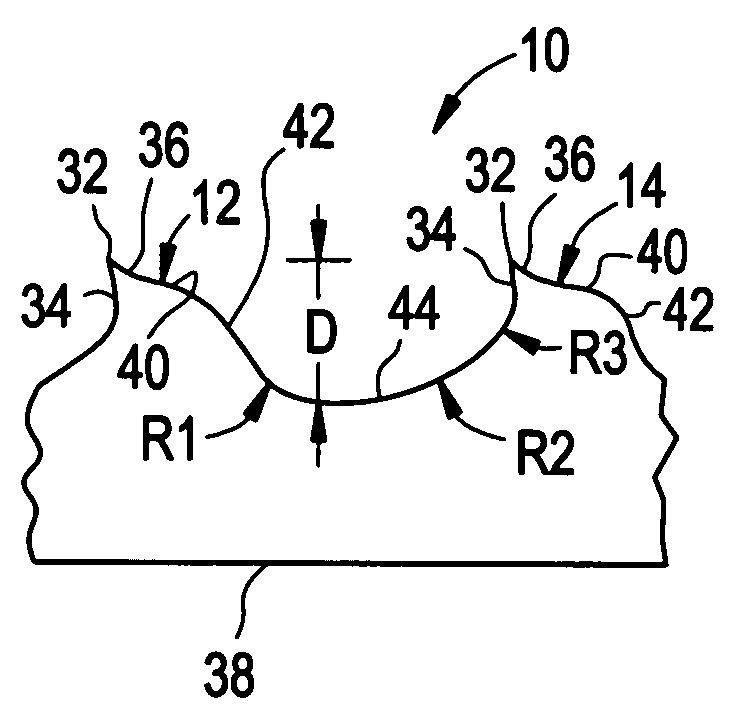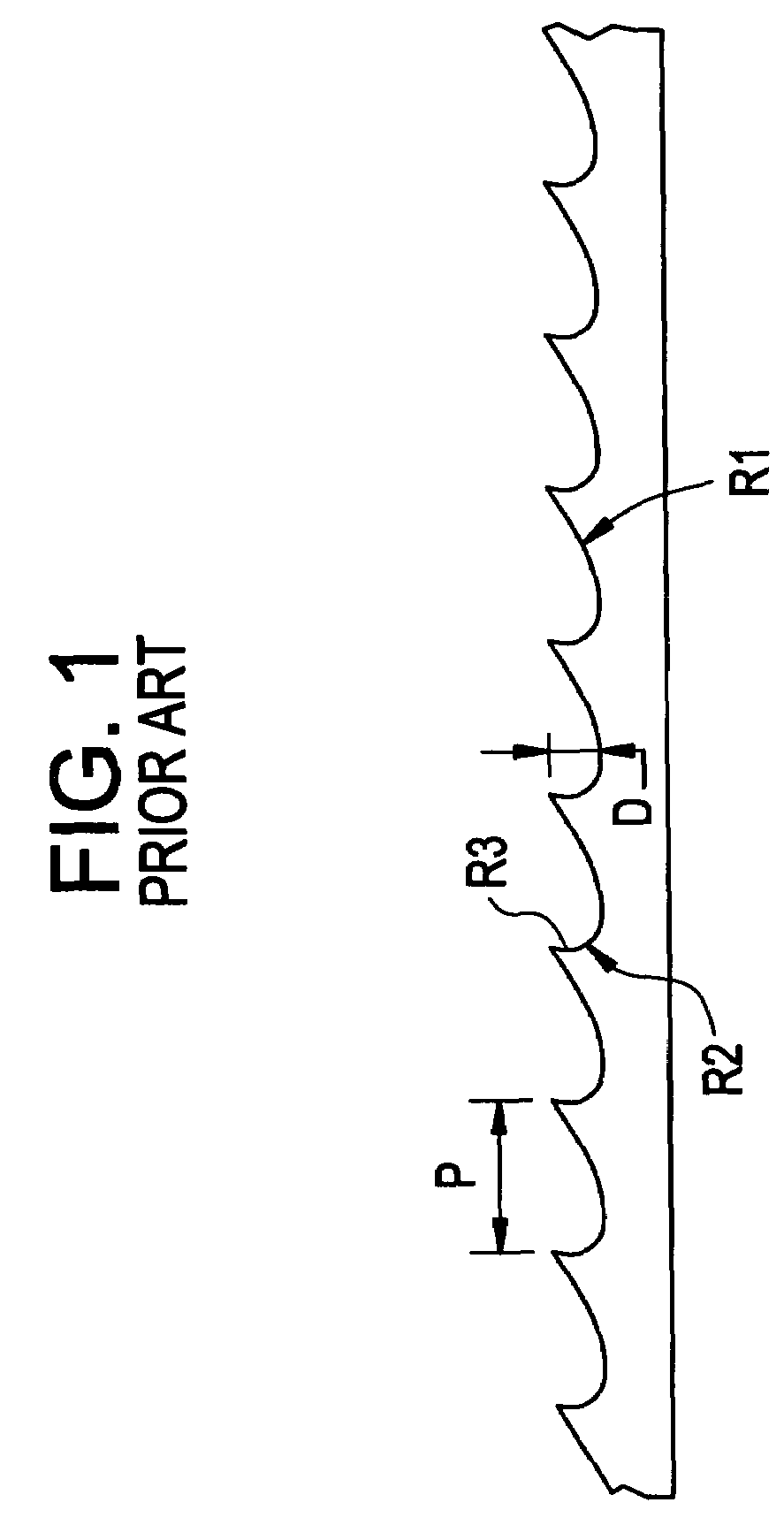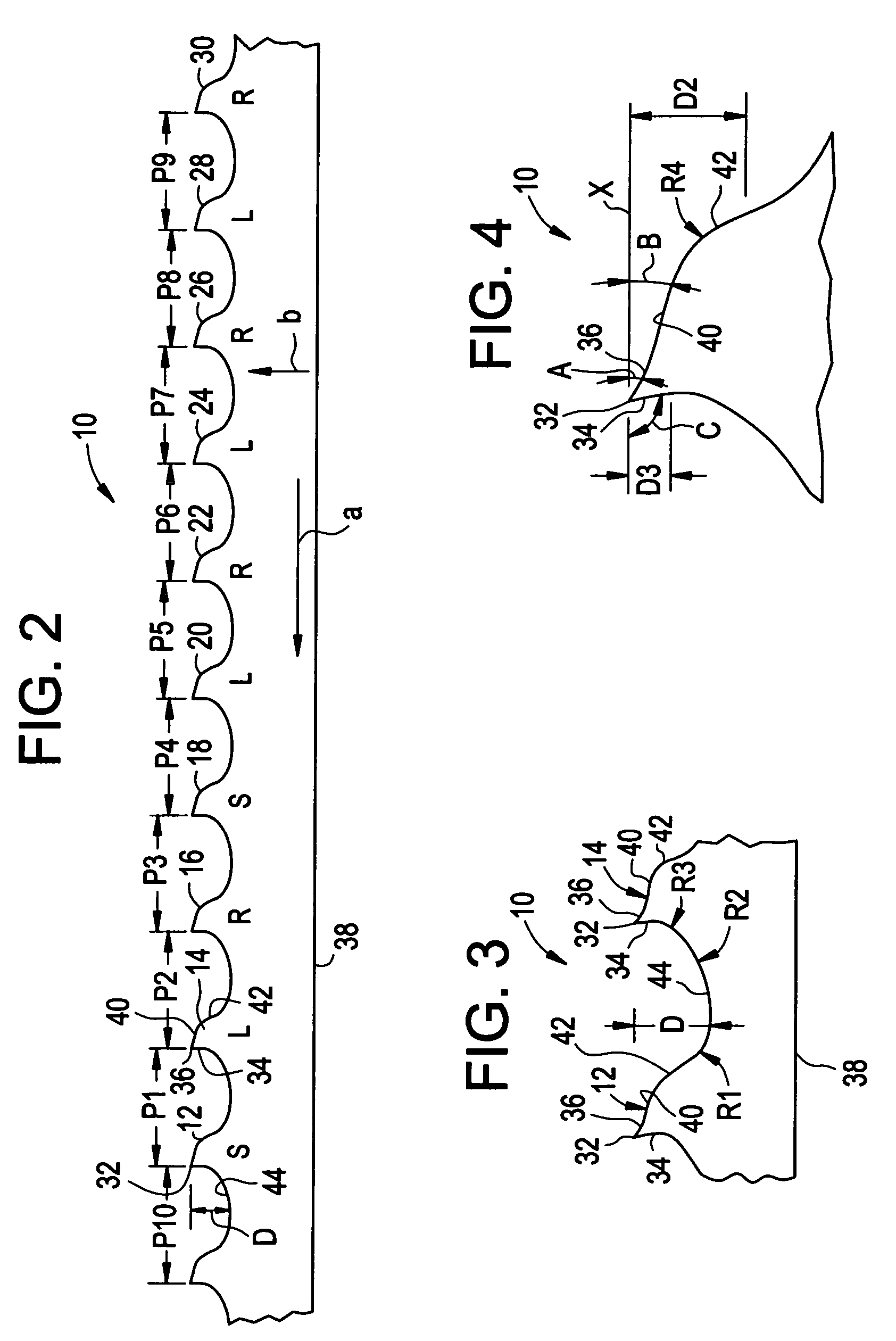Saw blade having increased tooth stiffness and resistance to fatigue failure
a technology of fatigue failure and tooth stiffness, which is applied in the field of saw blades, can solve the problems of excessive vibration and noise, premature band breakage and/or other fatigue-related problems, and the blade life is limited, so as to prevent the collapse of the set and subsequent excessive heat generation, increase the cross-sectional width, and increase the tooth stiffness
- Summary
- Abstract
- Description
- Claims
- Application Information
AI Technical Summary
Benefits of technology
Problems solved by technology
Method used
Image
Examples
Embodiment Construction
[0025]FIGS. 2 through 4, a wood-cutting band saw blade embodying the present invention is indicated generally by the reference numeral 10. The band saw blade 10 defines a cutting direction indicated by the arrow “a”, and a feed direction indicated by the arrow “b”. The band saw blade 10 comprises a plurality of recurrent or repetitive patterns of teeth defining a 10-tooth pitch pattern. Each pitch pattern is defined by a recurrent group of 10 successive teeth indicated by the reference numerals 12, 14, 16, 18, 20, 22, 24, 26, 28 and 30. As shown in FIG. 2, each tooth defines a respective pitch or tooth spacing P1 through P10. In the preferred embodiments of the present invention, and as indicated in FIG. 2, the pitch or tooth spacing is measured between the tips of adjacent teeth. However, as may be recognized by those of ordinary skill in the pertinent art based on the teachings herein, the pitch or tooth spacing may be measured between any of numerous other corresponding points be...
PUM
| Property | Measurement | Unit |
|---|---|---|
| radius | aaaaa | aaaaa |
| relief angle | aaaaa | aaaaa |
| relief angle | aaaaa | aaaaa |
Abstract
Description
Claims
Application Information
 Login to View More
Login to View More - R&D
- Intellectual Property
- Life Sciences
- Materials
- Tech Scout
- Unparalleled Data Quality
- Higher Quality Content
- 60% Fewer Hallucinations
Browse by: Latest US Patents, China's latest patents, Technical Efficacy Thesaurus, Application Domain, Technology Topic, Popular Technical Reports.
© 2025 PatSnap. All rights reserved.Legal|Privacy policy|Modern Slavery Act Transparency Statement|Sitemap|About US| Contact US: help@patsnap.com



